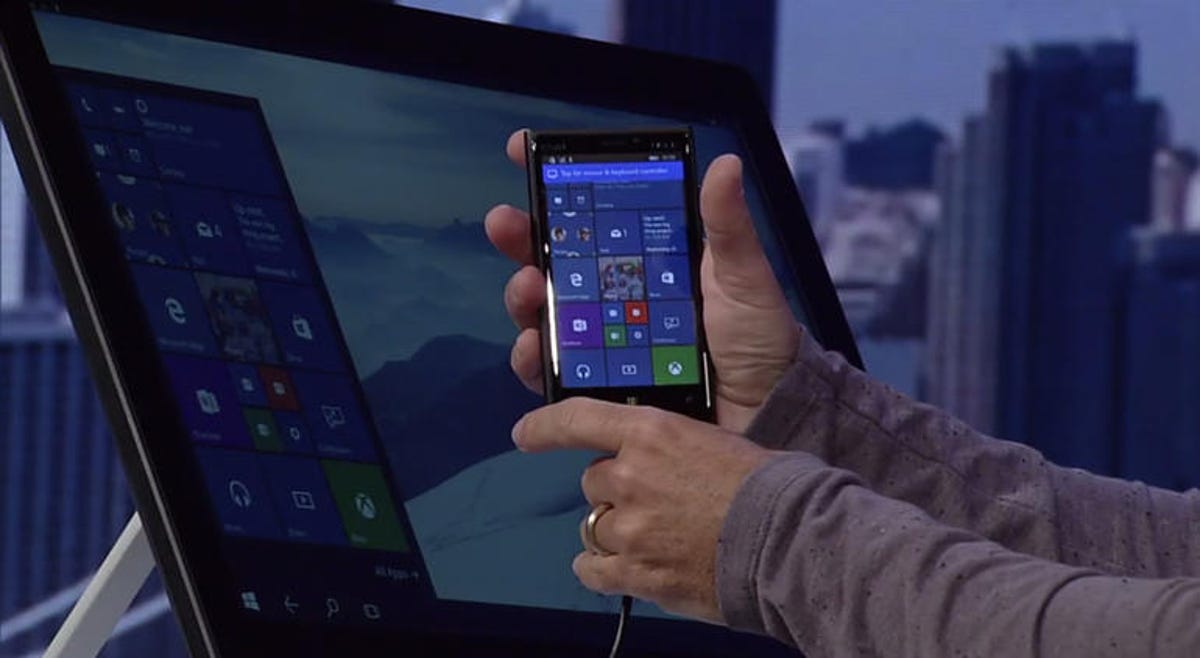
Screenshot by Juan Garzón/CNET
Windows Mobile is back from the dead.
Microsoft is killing off its Windows Phone brand, which has languished in the mobile market for the last five years. In its place: Windows 10 Mobile, a reference to the original name of its smartphone operating system, Microsoft announced in a blog post Wednesday. The company started distancing itself from both Windows Phone and the Nokia brand of its Lumia phones last fall.
Windows 10 Mobile, due out this summer, will run Microsoft’s so-called universal apps that are designed to work across all devices. The mobile OS will also make use of Microsoft’s new Continuum feature that will automatically switch an app’s layout when the phone is plugged into a PC monitor and communicating with a mouse and keyboard.
From 2000 to 2007, before the arrival of Apple’s iOS and Google’s Android, Windows Mobile was the world’s most popular mobile operating system. It ran mostly on personal data assistants, or PDAs, that preceded modern-day smartphones.
Microsoft hopes its new operating system will recapture some of that glory, thanks in part to the software’s ability to run on devices of all types and sizes. Executives want to have more than 1 billion devices running some version of the Windows 10 software by 2018. To help accomplish that aim, the company will offer the software for free to the vast majority of current PC, tablet and smartphone owners. Microsoft still hasn’t revealed the software’s exact release date.
“We designed Windows 10 to deliver a more personal computing experience across a range of devices. An experience optimized for each device type, but familiar to all,” Tony Prophet, Microsoft’s Windows marketing chief, wrote Wednesday. “Windows 10 will power an incredibly broad range of devices — everything from PCs, tablets, phones, Xbox One, Microsoft HoloLens and Surface Hub.”
Microsoft hopes its software won’t just run on traditional computing products, but also ATMs and sensor-equipped appliances, cars and gadgets connected to the so-called Internet of Things.
Microsoft on Wednesday also revealed the various iterations of Windows 10. There’s Windows 10 Home for average consumers, a more feature-packed version to be called Windows 10 Pro, Windows 10 Enterprise for businesses, and Windows 10 Education for schools and universities.




